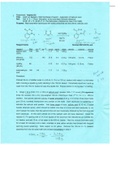Samenvatting
Samenvatting - Macroeconomie 2022/2023
- Vak
- Instelling
- Boek
Dit is een samenvatting voor het tentamen van Macroeconomie 2022/2023 Deze samenvatting bevat: - Hoofdstuk 1 t/m 7, 10.1+10.2+10.4, 11 t/m 13 van het boek: Macroeconomics: European edition - Aantekeningen van hoorcolleges/werkcolleges De samenvatting is in het Engels geschreven
[Meer zien]













